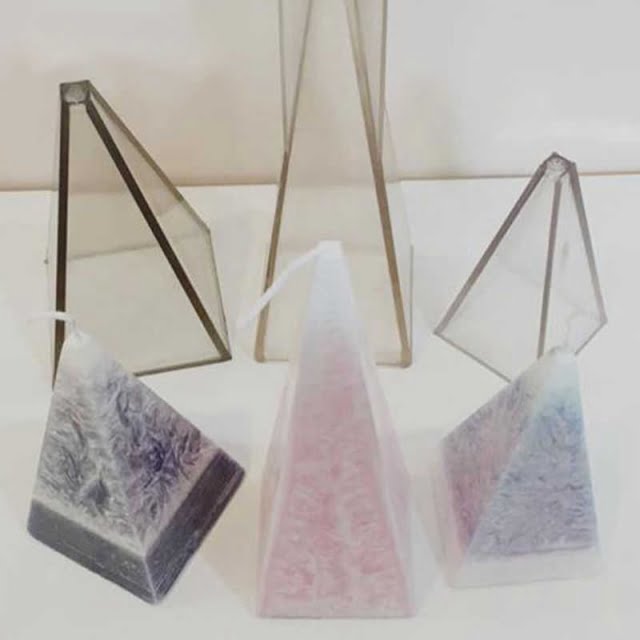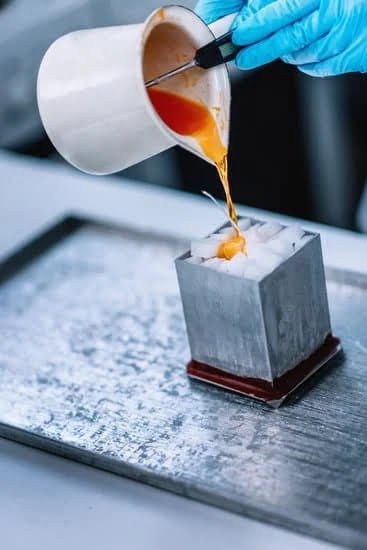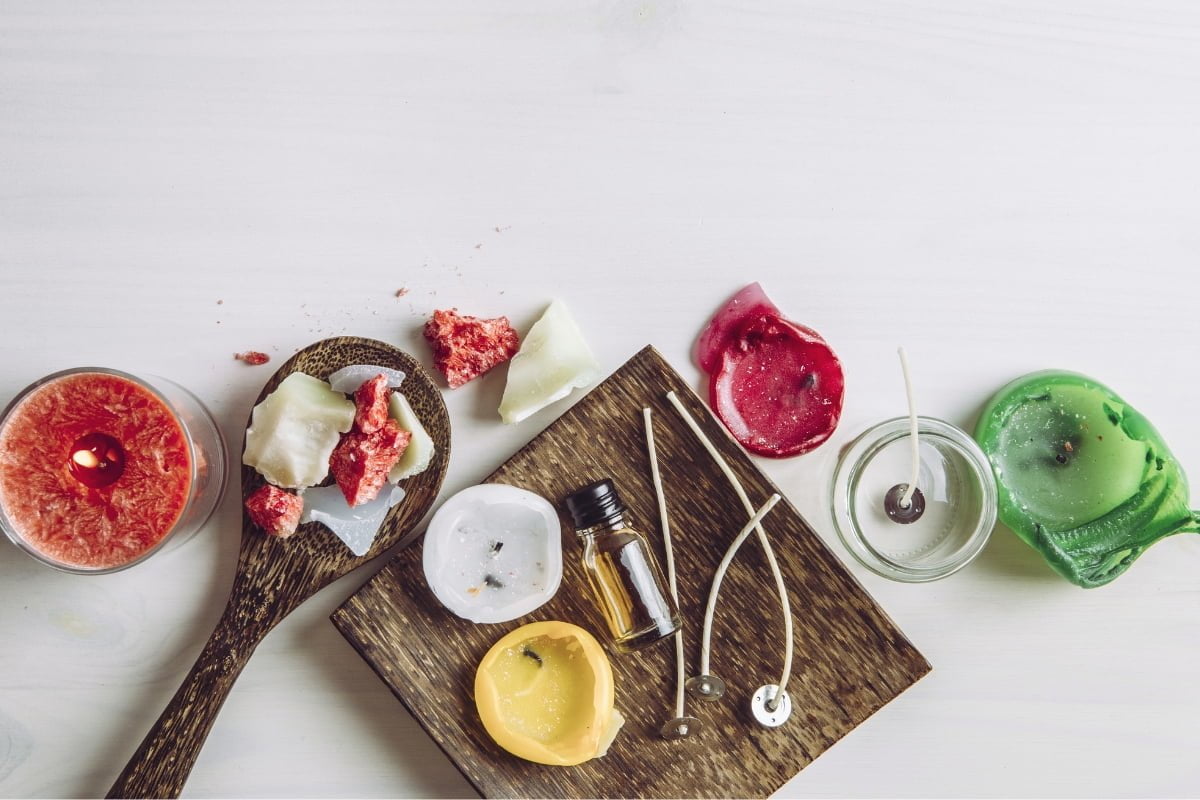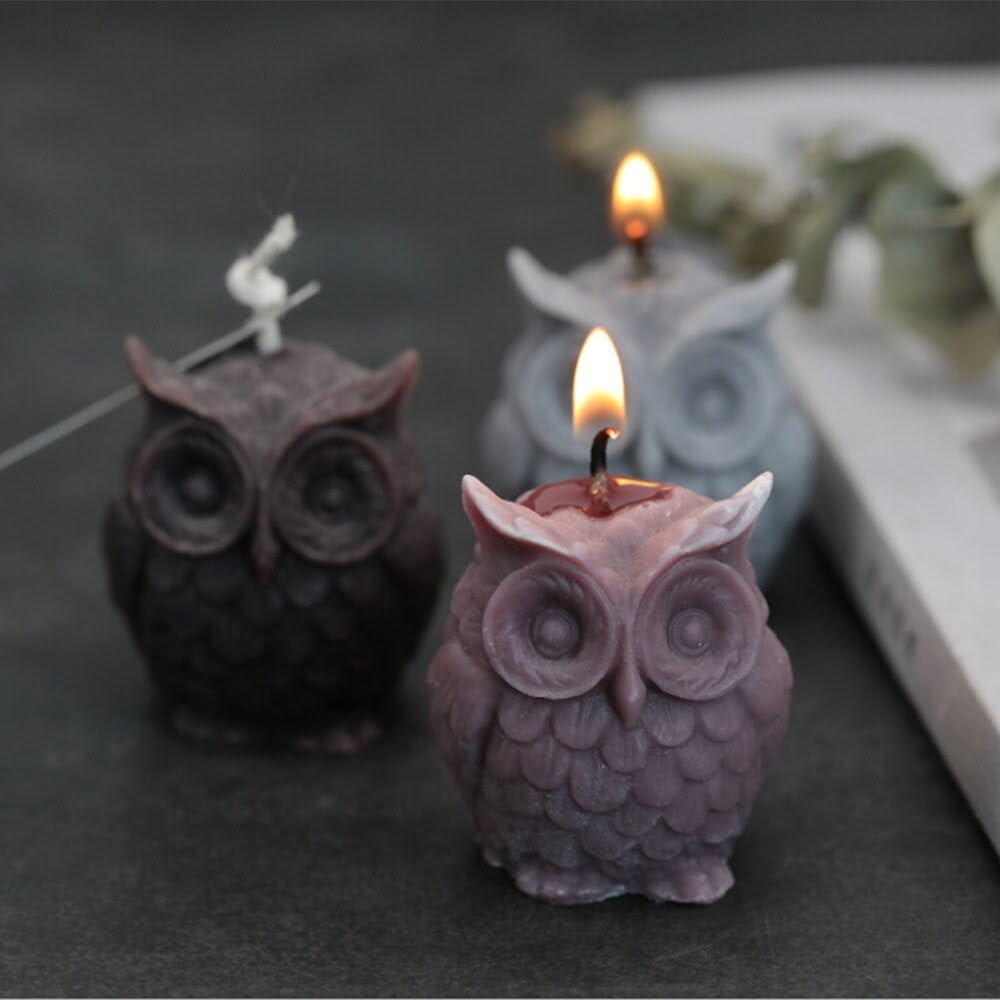Introduction
Candle wax is a special type of wax made specifically to use in the creation of candles. It has many benefits when used in candle making and is an integral part of the overall process. Candle wax allows for the candle to remain lit, as it acts as a fuel for the flame and prevents the wick from before burning.
Moreover, wax can add stability and flexibility to candles. Beeswax and paraffin are two of the most widely used types of candle wax, however there are several others available on the market today such as Soy, Gel and Gel/Wax Blend Wax. Each type of wax offers unique properties which can help make your candles beautiful, simple to burn and even provide other benefits such as long-lasting scents or colors.
Beyond this, candle wax can be customized depending on what sort of result you are trying to create. Different colorings and additives such as glitter or fragrance can be added to suit your needs and preferences. Additionally, mixing different types of waxes together can also yield exciting results which further enhances its usefulness in creating beautiful candles at home.
Different Types of Wax and Their Benefits to Candle Making
When making candles at home, there are several different types of wax to choose from. Each option carries its own set of benefits, depending on your preferences and needs.
Paraffin Wax: Paraffin is the most commonly used type of wax as it is fairly easy to work with and it lends itself to a wide range of shapes and sizes. Its low melting point helps produce quality finished products, but it can result in reduced burn times.
Soy Wax: Soy wax is becoming increasingly popular due to its sustainable source (soybeans) and many environmental advantages over paraffin wax. It’s suitable for use in container candles where you have more control over the burning rate, ensuring that your candle lasts longer than paraffin-based ones do.
Beeswax: Beeswax has a much higher melting point than soy or paraffin wax, so it’s best used in pillars and votives where it won’t collapse under its own weight as it burns down. Not only does beeswax usually have natural light colour variations but also a pleasant scent which lends itself well to aromatherapy purposes.
Palm Wax: Palm wax is made from the natural oil produced by palm fruit and has a unique crystallised marble look when poured into containers or pillars. This effect makes palm wax an ideal choice for decorative pieces like carved or layered candles that offer appealing visuals while burning steadily over time instead of overly fast or soft.
Gel Wax: Gel wax was specifically designed for free-standing candles whose intricate shape may not be able to handle other types of wax being poured directly on top after an initial pour. Its translucent colour effects make perfect Victorian-style candles that create a soothing glow while they burn evenly down each side with no smell or smoke generated by the burning process itself.
Pros and Cons of Different Waxes
When it comes to finding the best wax for making candles at home, there are many different types of waxes to choose from. Each type has its own pros and cons, so it’s important to compare them when deciding which one best suits your needs.
Paraffin: This is the most common type of wax used in candle making. Pros: Paraffin is affordable and easy to work with, so hobbyists often use it. Cons: It can leave behind a lot of soot and smoke, and doesn’t have a good throw or scent retention when compared to other types of wax.
Soy Wax: Soy wax has become increasingly popular in recent years due to its low toxicity and environmentally friendly status. Pros: Soy candles burn cleanly and are generally suitable for people with allergies or sensitivities. They also have excellent scent retention. Cons: Soy wax can be more expensive than other types of wax, and may require additional materials before you can start making candles with it.
Beeswax: This wax is an all natural product that comes from bees. Pros: Beeswax candles produce a pleasant honey-like scent when lit, and emit less smoke than soy or paraffin candles. Cons: It is rather costly compared to other types of wax, and often requires the use of special wicks that are not always available in stores.
Gel Wax: Gel wax is unique because it gives a three dimensional effect when molded into shapes while still burning like any other type of candle wax. Pros: Gel candles last longer since they burn much slower than other types of candlwaxwaxes doe; lthey also produce vivid colors without needing dyes or colorants added in.. Cons: The cost per pound significantly higher than paraffin or soy candlae waxes. Also gel may crack when exposed to high temperatures as well as cause glass containers to shatter if filled too hot
How to Select pH-Optimal Wax for Your Candle Making Needs
When selecting wax for making candles at home, it is important to select the correct type of wax for your specific needs. Beeswax is a popular choice as it has been used historically to make candles. Because of this, it has established a reputation as an excellent candlemaking material and one that’s reasonably priced. It also offers an even burn rate and pleasant honey-like aroma, making it a great option for many candle makers. Paraffin is another widely utilized wax variety due to its low cost and easy availability. It burns relatively quickly but may not provide optimal results when crafting more intricate structures. Soy wax has become a popular alternative in recent years due to its low melting temperature and reduced smokes emission, producing longer lasting and cleaner burning candles with an impressive scent throw. Gel wax provides exceptional clarity when poured into transparent molds with intricate designs, however special gelling additives must be employed in order to ensure the desired effect. Other increasingly common options, such as tallow or carbonated soy blends, offer vast potential for experimentation that can produce some truly unique results within the realm of candlemaking. Ultimately, whatever type of wax is ultimately applicable toyour project will depend on your budget , desired texture, scent throw, visual aesthetic , required burn time and any other relevant factors . Experimenting with different types can reveal the perfect solution for your crafty needs!
Where to Buy the Best Wax for Candles
If you want to make the best candles at home without breaking the bank, then it is important to choose the right wax. Different types of wax offer different benefits and will affect how your candles look, burn and smell. Paraffin wax is typically the most common type of wax used in candle-making because it is inexpensive and easy to work with. Soy wax can provide a softer, slower, and cleaner burning candle that can also hold more fragrance oils than paraffin. Beeswax gives off an distinct aroma when burning and adds a warm honey color to the finished product. Palm oil is a natural vegetable oil derived from palm plants that has many environmental benefits. In addition to these waxes, there are also special blends created for specific applications such as massage candles or Votives. Candles made with these blends tend to have optimal burning characteristics for their intended purpose.
No matter which type of wax you choose for making your own candles at home, it is important to purchase quality supplies from reliable retailers. Many craft stores have some form of basic candle supplies but they may not carry all the materials needed for successful candle-making projects such as molds or wicks. You can find more specialized stores online that carry high-quality wicks, additives, scents, dyes and specialty molds in order to make creating your own candles easy and affordable. Additionally, many of these retailers sell small sample sizes so you can find out what product works best for your needs before investing in larger quantities. With the right product knowledge and supplies, you’ll be able to create beautiful candles with ease!
Strategies for Melting Different Wax Types for Candle Making
When selecting wax for candle making, it’s important to understand the different melting points of the various wax types and what tools are best suited for melting them. Paraffin wax typically has the lowest melting point of 120-145 degrees F, making it easy to melt in a double boiler apparatus or an electric wax melter. Soy and beeswax tend to have higher melting points — around 140-180 degrees F — and can be melted using a double boiler, crock pot or a microwave. When using a microwave, just place the wax into a container (preferably one made of glass) and heat in bursts at 50% power until all the wax is melted. Viobin’s soy container blend tends to has slightly higher melt temperatures than other varieties of soy wax, so it’s recommended that you use a double boiler and maintain a temperature at 125-140 degrees F when melting the Soy Container Blend Wax from Viobin. Be sure to stir occasionally with silicone spatula and take care not overheat the wax as this can lower its quality.
Tips for Crafting the Perfect Candle with Different Waxes
When it comes to candle making, one of the most important considerations is choosing the right wax. Different types of wax burn differently, produce different amounts of scent, and have different melting points. To craft a perfect homemade candle, you need to know which wax is best for your specific project. Here are some tips:
Paraffin – Paraffin wax has been the go-to material for many of today’s commercial candles due to its economical cost and easily production. Paraffin burns slowly and steadily and can also hold scent molecules very well. It’s a great choice for votives, pillars, tapers or any other candle where you don’t want drips.
Soy Wax – Soy wax has become increasingly popular these days thanks to its clean burning properties and its eco-friendly nature (made from soybeans). Its creamy texture gives candles an attractive matte finish that’s highly sought after by many crafters. Soy wax also holds scent particles in suspension longer than paraffin making it ideal for aromatherapy candles and scented votives or pillars.
Gel Wax – Gel wax is a clear jelly-like substance commonly used in container candles as it holds more oil than either paraffin or soy wax does. Though not as common as the previous two waxes, gel candles still offer a creative outlet for those looking to use unique shapes or bright color combinations in order to create eye-catching results. However, gels require specialized safety precautions such as using special wick shields when using larger diameter jars due to their high level of flammability.
Beeswax – Beeswax was one of the first known materials used for candle making by ancient cultures due to its abundant supply from bees’ honeycomb structures. In addition to being an eco-friendly choice since it doesn’t involve any chemicals during processing such as bleaching or hydrogenation like other synthetic waxes do; beeswax produces higher quality light than both paraffin and soy ingredients while also giving off a pleasant aroma when burned. It burns cooler so you may be required to use longer wicks if adding fragrance oils or heavy decorations which might cause overheating of the surrounding area where the flame is lit upon initial lighting then extinguishing shortly thereafter.
FAQs about Candle Wax, Proper Candle Making Techniques, and Care
Q: What is the best wax for making candles at home?
Candle-makers have a lot of options when it comes to choosing wax for their projects. The two most popular types of wax for making DIY candles are paraffin and soy. Paraffin wax is derived from petroleum, has a long burn time, and can hold color or scent well. It’s often chosen over soy if candles need to have a harder texture. Soybean wax is all-natural, biodegradable, and renewable, but has a more subtle scent throw compared to paraffin. No matter which you choose, make sure that your chosen wax has been specifically designed for candle-making and is certified as non-toxic before you use it.
Q: What are some proper candle making techniques?
Making quality candles at home starts with having the right supplies and tools on hand – wicks, metal wick centering devices, thermometers, wax melting pots (or double boilers) – and using temperature control to melt your wax safely. When finishing your candles off with wicks or adding in scents or dyes, do so carefully as too much dye or too high of concentrations of essential oils can cause problems in both burning behavior and smell throw once lit. Lastly, be careful to avoid overworking the wax during pouring or manipulating the wet surfaces after poured – improper mold release methods can also lead to weak walls that will collapse under the heat of their own burn.
Q: How should I care for my homemade candles?
As soon as candles are cool enough to handle (which could take one hour per inch), they should be stored correctly in an airtight container with mini binder clips on the wicks so they don’t get buried under the sides of their containers during transport. Before each burn session – no more than four hours at a time – always clip away any black carbon bits that have grown around the end of your burned wick so only fresh fibers will burn during your next flame time. Make sure to keep all combustibles away from open flames and use appropriate measures such as stands or trays if needed while burning them during longer sessions
Suggestions for Decorating and Presenting Candle Wax Crafts
When it comes to decorating and presenting candle wax crafts, there are several types of wax that may be used. For making candles at home the best choice is usually beeswax. Beeswax offers a variety of benefits when creating candles – it is easy to use, has an incredibly pleasant aroma, and produces a slow, clean burn. Additionally, when used properly it can create stunning visuals such as intricate swirling designs and beautiful molded shapes.
When decorating and presenting candle wax crafts that have been made with beeswax, there are a few things to consider. First, it’s important to melt the wax in the proper container over low heat or in a double boiler before adding any additional ingredients; this will ensure that the temperature of the wax remains consistent. After melting the beeswax into liquid form, aromatics can be added for enhancing its scent. Decorating elements can also be included at this point depending on the desired color and effect – everything from glitter and feathers to herbs or food coloring can be used to further personalize your creations! Finally, when pouring your melted mixture into a mold or candle holder, make sure you do so slowly – quick movements can cause air bubbles or unevenness which will result in an undesired outcome. Following these simple steps should help create beautiful decorations with visual appeal sure to wow any onlooker!
Conclusion
The best wax for making candles at home depends largely on personal preference, budget, and the desired look and consistency of the candle. Beeswax is a great choice for beginners as it’s easy to work with and creates a natural and attractive look. Soy wax is a popular option among hobbyists as it burns cleanly and produces longer-lasting, high-quality candles. For more experienced candlemakers seeking a custom look, paraffin wax provides maximum flexibility in terms of scent, color and shape. Whichever wax you choose, safety should always be your top priority when working with any type materials related to open flame.

Welcome to my candle making blog! In this blog, I will be sharing my tips and tricks for making candles. I will also be sharing some of my favorite recipes.





